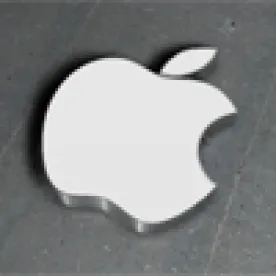Takeaway: Presentation of an obviousness case requires a reasoned explanation as to why all of the claimed limitations would have been obvious to a person of ordinary skill in the art at the time of the invention.
In its Decision, the Board denied the Petition and did not institute inter partes review as to any challenged claim. The Board’s position was that Petitioner had not demonstrated a reasonable likelihood that it would prevail with respect to any of the challenges set forth in the Petition.
The ‘063 patent relates to an audio entertainment system that “can . . . act as a server of music and other files to [a] base unit (e.g., from Apple Computer’s iTunes service or the like) or as a streaming audio source” such that “[w]ith appropriate decoder software executing on processor 115 or another processor (not shown), the device can play songs provided in various music formats, such as WAV, MP3, WMA, and AAC, among others.”
Petitioner had challenged claims 1-61 of the ‘063 patent on the following grounds: (1) obviousness of claims 1-8, 13-16, 18, 19, 22, 24, 25, 28-35, 38-43, 45, 46, 48, 51, and 55-61 under 35 U.S.C. § 103(a) in view of Qureshey; (2) obviousness of claims 9, 27, 37, and 53 under 35 U.S.C. § 103(a) in view of Qureshey and Oppermann; (3) obviousness of claims 10-12, 23, 26, 36, 44, 52, and 54 under 35 U.S.C. § 103(a) in view of Qureshey and Silvester; (4) obviousness of claims 17, 20, 47, and 49 under 35 U.S.C. § 103(a) in view of Qureshey and Robbin; and (5) obviousness of claims 1-8, 13-16, 18, 19, 22, 24, 25, 28-35, 38-43, 45, 46, 48, 51, and 55-61 under 35 U.S.C. § 103(a) in view of Qureshey and Levy.
The Board agreed with Patent Owner that Petitioner “[had] not shown that Qureshey teaches a media content control signal sent from PC 1508 to the Internet site of Ex. 1005 ¶ 173 that causes the Internet site to download media content to device 1510 (the identified output unit).” As stated by the Board, Petitioner’s apparent reading of claim 1 was that “any signal directly, or indirectly, adding a file to a device also causes any further movement or playing of that file in the future, merely because the existence of the file on that device is a necessary condition to it being moved from that device to another.” However, the Board found that Petitioner “[had] provided no persuasive argument or evidence to show that claim 1 should be read this broadly” and thus the Board concluded that “such breadth is unreasonable.”
The Board also found that Petitioner had not shown that it was “reasonably likely to show that Qureshey teaches that a user selectively controls a second media source for content downloading or streaming[.]” For example, the Board found that “Petitioner makes no argument and presents no evidence as to whether the user [in Qureshey] selectively controls device 1510 or device 1520 (alternatives for the second media source)” and that while “Petitioner cites to Dr. Mercer’s testimony in support of its argument[,] Dr. Mercer . . . also is silent as to whether a user selectively controls a second media source.”
Apple Inc. v. Chestnut Hill Sound Inc., IPR2015-01464
Paper 10: Decision Denying Institution of Inter Partes Review
Dated: January 13, 2016
Patent: 8,725,063 B2
Before: Rama G. Elluru, David C. McKone, and John F. Horvath
Written by: McKone
Related Proceedings: Chestnut Hill Sound, Inc. v. Apple Inc., Civil Action No. 1:15-cv-00261 (D. Del); Apple Inc. v. Chestnut Hill Sound Inc., Case IPR2015-01465 (PTAB)



 />i
/>i

